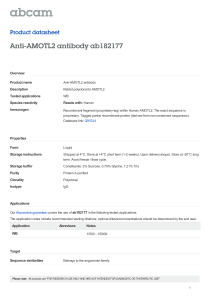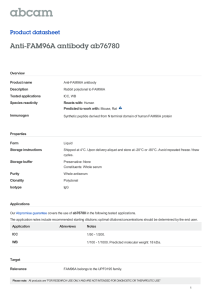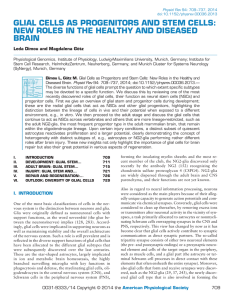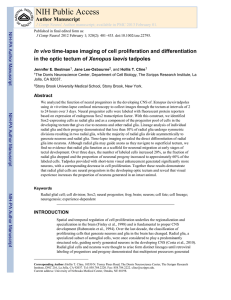Anti-EDG8 antibody ab167049 Product datasheet Overview Product name
advertisement
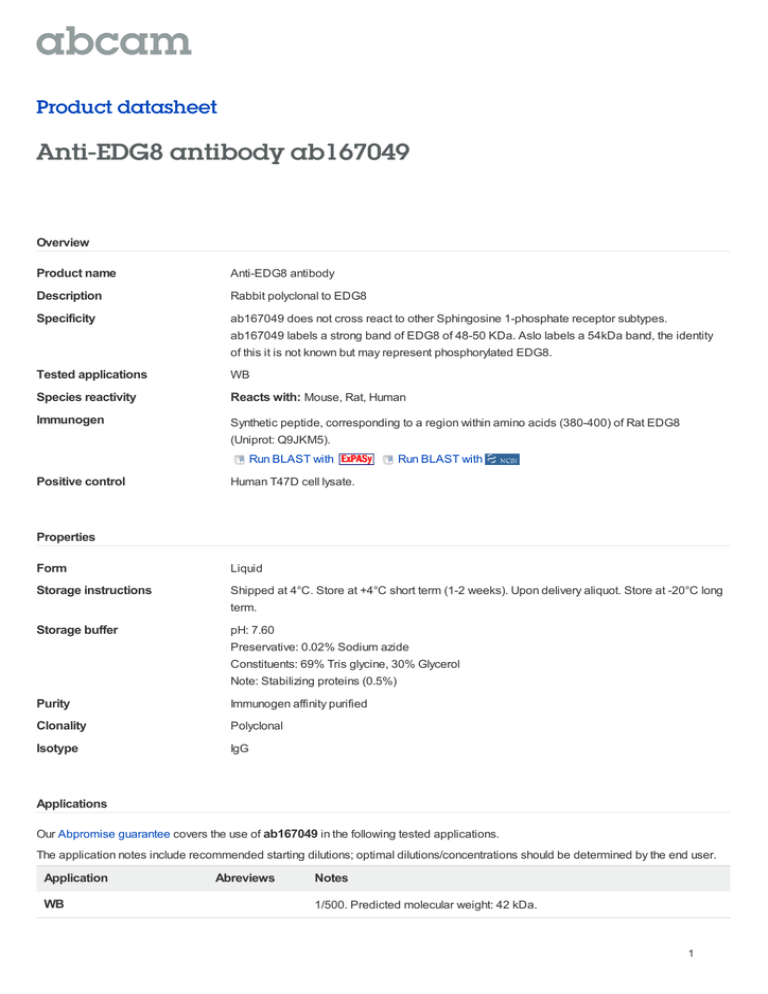
Product datasheet Anti-EDG8 antibody ab167049 Overview Product name Anti-EDG8 antibody Description Rabbit polyclonal to EDG8 Specificity ab167049 does not cross react to other Sphingosine 1-phosphate receptor subtypes. ab167049 labels a strong band of EDG8 of 48-50 KDa. Aslo labels a 54kDa band, the identity of this it is not known but may represent phosphorylated EDG8. Tested applications WB Species reactivity Reacts with: Mouse, Rat, Human Immunogen Synthetic peptide, corresponding to a region within amino acids (380-400) of Rat EDG8 (Uniprot: Q9JKM5). Run BLAST with Positive control Run BLAST with Human T47D cell lysate. Properties Form Liquid Storage instructions Shipped at 4°C. Store at +4°C short term (1-2 weeks). Upon delivery aliquot. Store at -20°C long term. Storage buffer pH: 7.60 Preservative: 0.02% Sodium azide Constituents: 69% Tris glycine, 30% Glycerol Note: Stabilizing proteins (0.5%) Purity Immunogen affinity purified Clonality Polyclonal Isotype IgG Applications Our Abpromise guarantee covers the use of ab167049 in the following tested applications. The application notes include recommended starting dilutions; optimal dilutions/concentrations should be determined by the end user. Application WB Abreviews Notes 1/500. Predicted molecular weight: 42 kDa. 1 Target Function Receptor for the lysosphingolipid sphingosine 1-phosphate (S1P). S1P is a bioactive lysophospholipid that elicits diverse physiological effect on most types of cells and tissues. Is coupled to both the G(i/0)alpha and G(12) subclass of heteromeric G-proteins (By similarity). May play a regulatory role in the transformation of radial glial cells into astrocytes and may affect proliferative activity of these cells. Tissue specificity Widely expressed in the brain, most prominently in the corpus callosum, which is predominantly white matter. Detected in spleen, peripheral blood leukocytes, placenta, lung, aorta and fetal spleen. Low-level signal detected in many tissue extracts. Overexpressed in leukemic large granular lymphocytes. Isoform 1 is predominantly expressed in peripheral tissues. Isoform 2 is expressed in brain, spleen and peripheral blood leukocytes. Sequence similarities Belongs to the G-protein coupled receptor 1 family. Developmental stage At 24 weeks of gestation, fragments of radial glial fibers are positive within the cortical plate and subplate of allocortical areas. These positive fragments often appear enlarged as varicosities and some of them terminate at blood vessels. Between 28 and 30 weeks of gestation, all isoand allocortical areas contain immunolabelled radial glial fibers revealing curvature next to sulci. After 32 weeks of gestation, radial glial fibers gradually disappear; instead positive transitional stages between radial glia and astrocytes were found. Cellular localization Cell membrane. Please note: All products are "FOR RESEARCH USE ONLY AND ARE NOT INTENDED FOR DIAGNOSTIC OR THERAPEUTIC USE" Our Abpromise to you: Quality guaranteed and expert technical support Replacement or refund for products not performing as stated on the datasheet Valid for 12 months from date of delivery Response to your inquiry within 24 hours We provide support in Chinese, English, French, German, Japanese and Spanish Extensive multi-media technical resources to help you We investigate all quality concerns to ensure our products perform to the highest standards If the product does not perform as described on this datasheet, we will offer a refund or replacement. For full details of the Abpromise, please visit http://www.abcam.com/abpromise or contact our technical team. Terms and conditions Guarantee only valid for products bought direct from Abcam or one of our authorized distributors 2
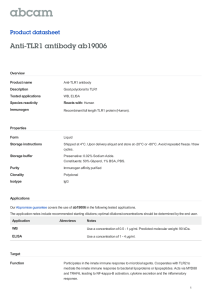
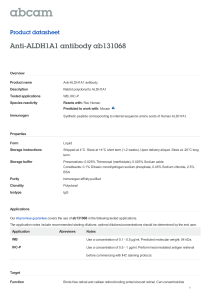
![Anti-SCF antibody [1.2_2H5-1C10] ab17482 Product datasheet Overview Product name](http://s2.studylib.net/store/data/012512210_1-7f6f843287d5ab7338411d5cede2de30-300x300.png)
